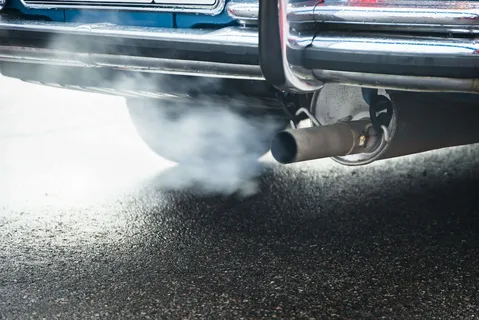Both for the performance of your car and your own health, a leaking exhaust pipe can cause several problems. Quickly addressing leaks guarantees safety and helps to prevent more damage. This article explores the reasons, symptoms, and several ways to repair a leaky car exhaust pipe, therefore offering a complete guide for car owners.
Common Causes of Exhaust Pipe Leaks
Though there are several causes for exhaust pipe leaks, rust and corrosion are among the most common. The metal components of the exhaust system can degrade with time from moisture, road salt, and other environmental conditions. Often in junctions, seams, and places where the pipes are more likely to be damaged, this corrosion takes place. Furthermore, high engine temperatures could aggravate the deterioration of these metal components, resulting in holes or fissures letting exhaust fumes escape.
An additional major reason for exhaust leakage is incorrect exhaust component installation. Inaccurate alignment of pieces or inadequate clamps’ security might lead to gaps that provide leaks’ opening. Moreover, physical damage from road trash or collisions could threaten the exhaust system’s integrity. Whether it’s a pothole-caused rupture or a dent in the pipe, such events can create rapid, obvious exhaust leaks. Premium quality exhaust systems for cars decrease the risk of pipe leakage.
Signs of a Leaking Exhaust Pipe
Early identification of a leaking exhaust pipe helps to avoid more major problems down-stream. A particularly obvious indication is an odd rise in exhaust system noise. If you hear a loud rumbling, hissing, or popping sound while the engine is running, it could mean that exhaust gasses are escaping via holes or fractures. Furthermore, you could feel vibrations or a clear change in the performance of the car, such a drop in acceleration or power, which could follow from improper exhaust gas flow through the engine.
Unusual scents, especially a strong scent of fuel or exhaust fumes inside or around your car, are another important indicator to be on lookout for. Given carbon monoxide exposure, this can seriously compromise health. Another sign is lower fuel efficiency; if you find yourself running more often on your gas tank, this could be the effect of a leaking exhaust compromising engine performance. Finally, obvious smoke or steam coming from the exhaust pipe can point to an issue that calls for quick assessment and repair to stop more harm to your car.
Best Way to Fix a Leaking Car Exhaust Pipe
Tools and Materials Needed for Repair
Get the equipment and supplies you’ll need before starting any repair project. Typical tools are pliers, a jack and jack stands, a wrench set, and a screwdriver. The degree of the damage will determine whether you also require clamps, exhaust sealant, or new components. Having everything ready will help to simplify the repair process.
Inspecting the Exhaust System
Once you have noted leak indications, closely examine the exhaust system. Look first for any evidence of damage or corrosion on the exhaust pipes, muffler, and joints. For hard-to-see places, a mechanic’s mirror can be quite useful. The location of the leak may also be indicated by listening for hissing or popping sounds while the engine is running.
Temporary Fixes for Minor Leaks
Temporary repairs for minor leaks can be done while a long-term cure is discovered. For little holes or cracks, a sealant or exhaust tape might be really successful. Wrap the tape around the impacted region and make sure it stays tightly. Although this fixes nothing, it can assist reduce noise and exhaust emissions until a suitable repair is done.
Replacing Damaged Components
Replacement of the damaged exhaust components could be required in more serious damage scenarios. This can call for gaskets, exhaust pipes, or mufflers. manufacture sure you buy the right parts for your model of car manufacture. Use these guidelines to replace a component: disconnect the broken one, insert the new one, and fasten it with the suitable clamps and bolts.
Professional Repair vs. DIY
Your comfort level and the degree of damage will determine whether you want professional help or a do-it-yourself fix. Do-it-yourself repairs can save money and give you pride for minor leaks. If the leak is considerable or you lack the required tools, though, it is important to see a professional technician to guarantee the repair is carried out safely and correctly.
Preventative Measures to Avoid Future Leaks
Your exhaust system’s lifetime can be extended and future leaks’ risk reduced with preventative maintenance. Check your exhaust system often for wear and tear; think about covering exposed portions with rust-resistant material. Maintaining cleanliness of your car can also help to prevent corrosion, particularly in winter when road salt is somewhat common.
Conclusion
As a matter of fact one should not overlook a leaking exhaust pipe. Knowing the origins and symptoms as well as how to solve the problem helps drivers to keep their cars in good running order. Whether you choose to do it yourself or see a professional, quick resolution of exhaust leaks guarantees the lifetime of your car and occupant safety. Preventing exhaust leaks and helping you avoid future expensive repairs can be greatly aided by regular maintenance and inspection.
Visit thetravello for more articles.

